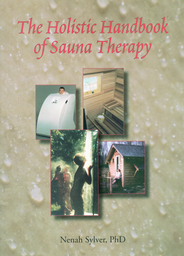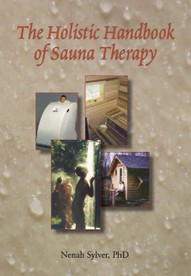Using Ozone in the Sauna
The Holistic Handbook
of Sauna Therapy
by Nenah Sylver, PhD
Appendix A:
a Brief Summary of Ozone
There are no endnote references in this excerpt, but the book contains all the references.
For a couple of decades, various opinions have circulated regarding the levels of oxygen in Earth’s atmosphere today compared to levels thousands or millions of years ago. Research has been reportedly based on many types of geological testing, from samples of air inside the pyramids to polar ice cores. The most concrete data suggesting increased oxygen levels is from an article, "Gas Bubbles in Fossil Amber as Possible Indicators of the Major Gas Composition of Ancient Air." Robert A. Berner and Gary P. Landis write:
we present data that…suggest that the major gas composition of air (N2/O2 ratio) has changed appreciably during the past 90 million years….[C]alculation of original oxygen concentrations…appear to have changed from greater than 30 percent O2 during one part of the late Cretaceous (between 75 and 95 million years ago) to 21 percent during the Eocene-Oligocene and for present-day samples, with possibly lower values during the Oligocene-Early Miocene.
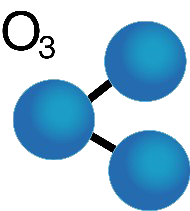

The interpretations of the above authors, if not the data itself, has been contested by some researchers. They assert that when the ratio of oxygen to other gases is at 25%, the humidity must not drop below 50%; otherwise, numerous materials will easily combust. Therefore, they conclude, it is impossible for the ratio of oxygen to have ever been 25%. This discussion is beyond the scope of this book—but whether our planet once had much higher concentrations of oxygen or not, it is clear that within the last century, it has become harder and harder to breathe. One whiff of city air is all that’s needed to know this. In the 21st century, especially in industrialized cities with unbelievably high amounts of pollution, we are literally starving for oxygen. It is no surprise that Tokyo—not only with its high air pollution levels but with more people per square mile than any other city in the world—opened "oxygen bars" recently, where people congregate (as some do here in liquor bars), and inhale oxygen. Oxygen bars have now opened in the United States.
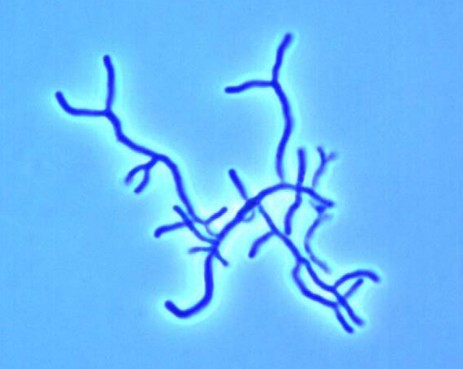
The diminishing in quality of our oxygen supply has cost us dearly in terms of our health. Dr. Otto Warburg, who won the Nobel Prize for medicine twice (1931 and 1944), believed that the fundamental cause of all degenerative disease was oxygen starvation at the cellular level. It is certainly true that oxygen starvation is an important factor in remaining healthy. More efficient bodily metabolism (and an augmented oxygen supply) means better mental and physical abilities. It also provides more natural immunity to disease, since most pathogenic microbes are anaerobic—that is, they cannot survive in an aerobic (oxygen-rich) environment. Even those microbes that are aerobic—which are adaptable enough to switch from being anaerobic to aerobic—are less likely to survive if the person receives ozone therapy. There are two reasons for this. First, the therapy has a beneficial effect on the body’s immune response. Two, as I shall explain shortly, properly administered ozone therapy can destroy the cell wall of even aerobic microorganisms.

Oxygen therapy is not new. Various forms of oxygen used for therapy—hydrogen peroxide, ozone, and oxygen in its hyperbaric (pressurized) form—have been used for 100 years or longer. The antiseptic properties of hydrogen peroxide are familiar to every child who ever skinned his or her knee and watched bubbles emerge from the wound as the hydrogen peroxide was applied. Hyperbaric oxygen was used to treat deep sea divers who came to the surface too quickly, and later its medical applications were realized. In this Appendix, I will be focusing on ozone and how it is used in sauna therapy. First, however, I want to discuss how ozone is formed and dispel the negative public image that it often receives.
Oxygen is found in nature in a diatomic form (two atoms together), and thus has the chemical designation of O2. Ozone, also found in nature, is triatomic (three atoms together), and thus has the chemical designation of O3. O3 is much more reactive than O2: the extra atom of oxygen easily leaves its two partners and, in a process called oxidation, combines with other substances that have a suitable charge. Inside the body, this oxidation process commonly occurs with lipid (fat) molecules, bacteria, viruses, fungi, and toxins.
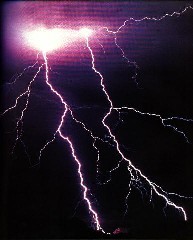
The word "ozone" comes from the Greek word "ozein," which means "to smell." You may remember being outside and smelling ozone created by lightning after a thunderstorm. However, more commonly ozone is created by the sun’s ultraviolet radiation, "produced constantly in the upper atmosphere as long as the sun is shining," writes health care practitioner and ozone specialist Saul Pressman in The Story of Ozone. "Since ozone is heavier than air, it begins to fall earthward. As it falls, it combines with any pollutant it contacts, cleaning the air—nature’s wonderful self-cleaning system. If ozone contacts water vapor as it falls, it forms hydrogen peroxide, a component of rainwater, [which is] the reason why rainwater causes plants to grow better than irrigation with ground water."
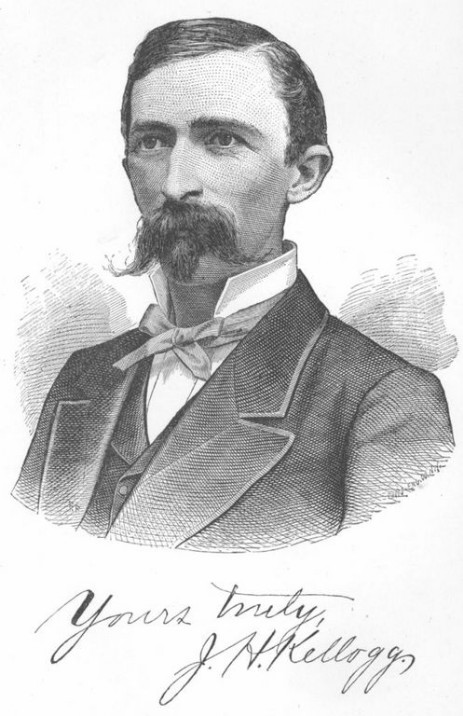
Ozone was discovered and named in 1840 by a German chemist working at the University of Basel in Switzerland. In 1856, the gas was used to disinfect operating rooms, and in 1870 it was reported to purify blood in test tubes. Monaco was the first country to build a water treatment plant using ozone in 1860, followed by Holland, Germany and France. The Germans began injecting ozone in 1898. Meanwhile in America, the Florida Medical Association published a work explaining how to use ozone therapeutically. And Dr. John Harvey Kellogg first used ozone in sauna steam cabinets in 1881 at his naturopathic sanitarium in Battle Creek, Michigan, having written in his 1880 book Diphtheria: Its Causes, Prevention, and Proper Treatment that "Probably, no agent...for the purpose of purifying the air of the sick-room…is so useful for this purpose as ozone, one of the most powerful disinfectants known."
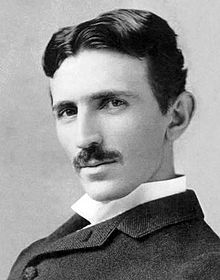
In 1896, "free energy" scientist Nikola Tesla patented his first ozone generator, and in 1900 sold ozonated olive oil to doctors for medical use. Throughout the first half of the 20th century, numerous physicians and dentists published detailed accounts of successfully using ozone to treat a wide variety of diseases and conditions, including anemia, asthma, gout, hay fever, syphilis, many kinds of cancers, chemical poisoning, diabetes, influenza, pneumonia, gangrene, wounds, and even insomnia and strokes. A 1904 volume of chemist Charles Marchand’s The Medical Uses of Hydrozone [ozonated water] and Glycozone [ozonated olive oil] is still in the Library of Congress, approved by the US Surgeon General. On June 22, 1909, Dr. William D. Neel of Chicago was awarded a patent for a device that was designed to treat numerous medical conditions by combining ozone with aromatic (essential) oils for inhalation. And during World War I, as was reported later in German medical journals, the Germans used ozone to treat many conditions including chlorine gas burns, gangrene, influenza, and trench foot.
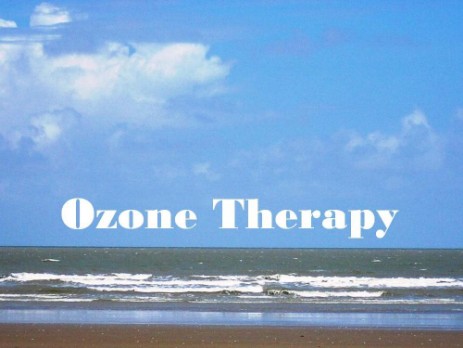
Despite the efforts of certain prominent people in the medical-pharmaceutical establishment to eliminate ozone therapy as a viable medical treatment, respected doctors continued working with ozone and reporting their successes. As of this writing, ozone therapy is recognized in Brazil, Bulgaria, Cuba, the Czech Republic, France, Germany, Hungary, Israel, Italy, Japan, Mexico, Poland, Romania, Russia, Singapore, Yugoslavia, four Canadian provinces, and fourteen US states.
A few companies have managed to bind the unstable ozone with other substances such as magnesium or calcium to form a powder, which when mixed in water for drinking releases the ozone (and, like its cousin hydrogen peroxide, has a less than pleasant taste and sensation). Other products are called "stabilized oxygen." However, in most cases, ozone is taken in its gaseous form.
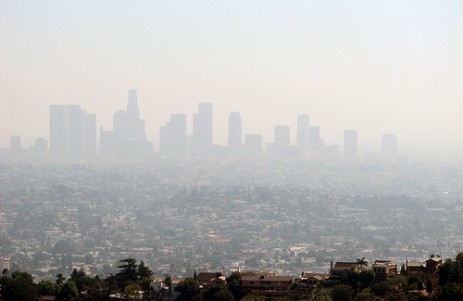
There has been considerable negative publicity concerning ozone near the earth’s surface. The United States Environmental Protection Agency has stated that ozone works fine where it belongs—in the upper atmosphere to (presumably) shield us from the sun’s UV rays (more about that later)—but, it claims, no amount of ground-level ozone is good for you (although the agency "settles" for .08 parts per million (PPM) amount as acceptable, since there will always be some ozone at ground level). Ozone levels are most likely to be elevated around noontime through early evening on hot, sunny days, we are told—a true enough statement, considering that the UV rays from the sun produce ozone, and the sun shines most strongly in the afternoon. But this information is used to persuade people to avoid the outdoors!

The likeminded weather services in the United States and Canada issue a daily "ozone health advisory," which warns the public when these levels are "too" high. We constantly hear reports alleging the adverse effects of ozone, which include all kinds of respiratory irritation from shortness of breath and coughing to chest pain and asthma. It’s hard to ignore allegations such as: "Automobile exhaust is the primary cause of ground level ozone and the most serious air pollution problem in the northeast" from the New York State Department of Environmental Conservation. Or consider this statement from the Rhode Island Public Transit Authority: "The poor air quality is due to elevated ground level ozone concentrations. Ozone is a major component of smog and is formed by the photochemical reaction of pollutants emitted by motor vehicles, industry and other sources in the presence of elevated temperatures and sunlight." Even those sympathetic to the medical uses of ozone sometimes misinform, saying for instance that there is "good" ozone and "bad" ozone. All of these statements indicate a gross misunderstanding of what ozone is and how it works.
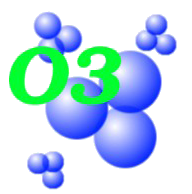
The best article on ozone that I have ever seen that helps explain why opposite opinions about the gas developed is called "The Toxicity of Ozone: A Report and Bibliography." It first appeared in the February 1950 edition of Industrial Medicine and Surgery and was written by Clark E. Thorp, acting Chairman of the Department of Chemistry and Chemical Engineering at the Armour Research Foundation of the Illinois Institute of Technology. After conducting an extensive review of all the literature on ozone to date, Dr. Thorpe pointed out that the reason researchers had different opinions was that they were not studying the same gas, due to how the ozone was being created. Investigators who reported intrinsically high toxicity levels for ozone were creating the gas with air instead of oxygen, and/or were also using comparatively high current densities in the machines that created the gas. Investigators who reported no or intrinsically low toxicity levels for ozone were creating the gas with pure oxygen from cylinders instead of mixed-gas air, and/or were also using low current densities in the machines that created the gas. It was this difference in the production of ozone that determined whether or not the final product was pure ozone, or contained harmful nitrogen oxides that appear when ozone is not made properly. It is these nitrogen compounds that are toxic, not the ozone itself.
Unfortunately, many of the researchers whose papers Thorpe read did not know the difference. "The majority of the reports claiming ozone to be a highly toxic gas are a direct result of the use of [certain] equipment in making toxicity studies." And despite the fact that several different scientists "called attention to the harmful effects of nitrogen oxides in ozone as early as 1913…no direct study of the influence of nitrogen oxides on the toxicity of ozone was published until 1941." One researcher even misreported and later recanted, Thorp explained.

After noting the work of Thorp previously mentioned [the author is referring to himself in the third person], Hill, realizing that oxides of nitrogen had been present in his previous test, decided to rerun the test on an identical basis to determine if pure ozone had higher toxic limits. These later tests showed that pure ozone was definitely non-toxic in concentrations as high as 50 parts per million. As a final result of his work, Hill states: "Pure ozone is not poisonous in any sense of the word as it breaks down in contact with the mucous membrane and oxygen only remains. For this reason, there are no cumulative effects and pure ozone may be breathed for long periods of time without harm, provided, of course, that immediate irritation of strong concentrations is avoided."

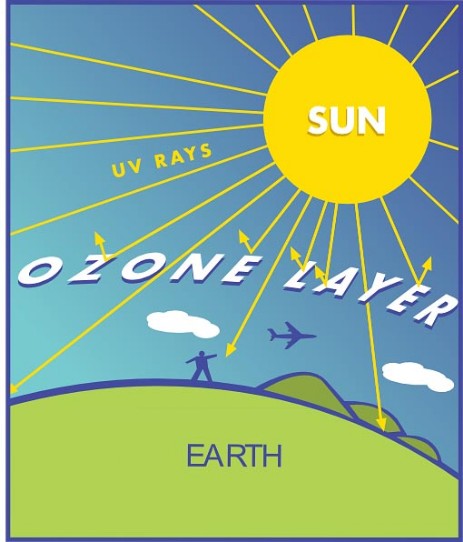

Thorp’s review of the literature clearly shows that research subjects were quite comfortable with pure ozone of concentrations of up to 20 PPM, whereas when ozone was mixed with nitrogen compounds levels of 5 PPM could not be tolerated. Also, irritation of tissues by ozone is quite different from inherent toxicity, and can be remedied by the inhalation of aromatic oils.
Thus, most mainstream literature on ozone is incorrect. What is called "ozone" are actually contaminants that occur in the production of ozone and which accompany ozone that is not properly made. Depending on how ozone is produced (if cathode rays, radioactive emissions or high-voltage charge are present), and the composition of the feed gas (whether it is air or pure oxygen), highly toxic nitrogen oxides and other compounds can exist along with the ozone. Pure ozone does not contain any contaminants. Ozone is O3, nothing more and nothing less. As ozone expert Ed McCabe points out, "broadly saying ‘Ozone is toxic’ is an uninformed opinion, due to oversimplification. It’s what you hear from the media, which usually only has time for ‘one-liners.’… if [the ozone is] contaminated, the contaminants are the toxins, not the ozone used at proper levels!"
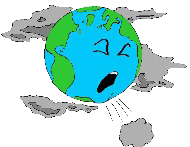
Other contaminants that can exist alongside ozone, and which are falsely accused of somehow being caused or exacerbated by ozone, include carbon monoxide, sulfur dioxide and nitric oxide. These compounds are caused by burning hydrocarbons in oxygen in the internal combustion engine. Ozone has been incorrectly blamed for smog, Pressman writes, since "ozone cannot be produced in the internal combustion engine because the hydrocarbon fuel quenches the spark gap." The ozone that occurs in smog "is produced by the photoelectric effect of the sun’s energetic photons acting on polluting gases." These do not pose any danger, since the single oxygen molecules that split off from these gases reattach themselves "in seconds" to the other gases, "which is part of nature’s system for cleaning the atmosphere. In fact, Pressman concludes, "The problem is not one of too much ozone in smog, but not enough. If sufficient amounts existed, the pollutants would all be oxidized and rendered harmless."
Thus the pollutants around ozone have nothing to do with the intrinsic qualities of ozone itself. It’s like leaving a bowl of beef stew out in the hot sun for many hours where it becomes contaminated with Bacillus botulinus, eating it, contracting food poisoning, and then deciding that stew is bad for you instead of acknowledging that you got sick because you let the food spoil. Neither the meainstream media, nor scientists at our government agencies, have seemed very willing to investigate the fact that pure ozone does not contain any contaminants or poisonous compounds.
Thus the phenomenon of "ozone contamination"—more accurately called "toxic contaminants"—simply indicates the need for clean sources of power, and for the manufacture of good quality ozone equipment that does not produce harmful chemical contaminants. Some manufacturers of commercial ozone generators use inferior components in an effort to save money, resulting in machines that deliver toxic compounds along with the ozone. Ethical manufacturers, however, install the proper components, ensuring that pure ozone is produced.
Now I want to discuss the concern about ozone inhalation. Detractors of ozone like to point out that inhaling even uncontaminated ozone at too high a concentration through the nose or mouth over long periods may cause lesions or other damage in the delicate mucous membrane lining of the respiratory tract. However, this is a half-truth, isolated out of context and used as a tactic to scare people away from a highly beneficial healing modality. First, as stated in Medical Applications of Ozone, ozone is indeed "toxic if inhaled," but "it is only a local toxicity"—and the studies concluding that ozone had negative effects on animals "were done by only observing respiratory tract lesions after long-term inhalation of ozone" [emphasis added]. Yet second, as Pressman points out, even this information from a sympathetic source is misleading, because rats and mice—the most commonly used laboratory animals—are affected adversely only because their lungs are unable to clear fluid as rapidly as animals with more advanced lung protection mechanisms. Physician George Freibott further clarifies the issue:


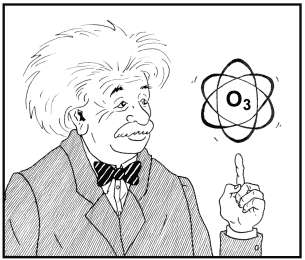
All I can say about ozone therapy is good things, as I have never seen it do harm to any patient yet. Even the Armour Report done in the 1950s states the following (this is the report that most governments and many scientists base their horror stories about ozone and its supposed harmfulness on). "Mice put in an extremely high flow of concentrated ozone developed pulmonary edema for 2 days, but by the third day the mice grew strangely resistant to the ozone and no more pulmonary edema was evident."
The reason no more pulmonary edema was evident was because the toxicity or toxic elements coating the lungs of these mice was fully oxidized, neutralized and eliminated by day three! The substances being fully oxidized left nothing more for the ozone to oxidize, thus the pulmonary edema and the "sensitivity" disappeared. We have seen it work likewise in patients that have had different respiratory dysfunctions.
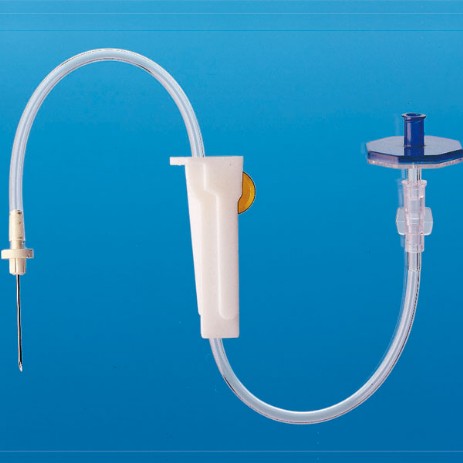
Personally, I oftentimes work in atmospheres of ozone (in our laboratories) that exceeds the allowable EPA and FDA standards of allowable ppm (parts per million) by 52,000 times! I suffer no diminution in lung capacity (in fact it has increased over the years).
We have given IA [intra-artery], IV [intra-venous], IM [intra-muscular], and by inhalation, doses of ozone and oxygen therapies to patients for over 25+ years personally, without any untoward side effects, ever.
The third twist to the particle of truth promoted by ozone detractors is that the source of the ozone is critical. If the gas is made improperly and contaminated with toxic chemicals, lesions on the lungs may indeed form. But again, that is not the fault of the ozone.
Ironically, it should be noted that the inhalation of raw ozone was never meant to be used as a medical therapy. Physicians and informed laypersons who use ozone for inhalation make sure that it is first passed through olive oil or a suitable essential oil. The title of the patent for the aforementioned aromatic inhaler device invented by Dr. Neel was called “Process of Producing a Medicament [medication]” because the ozone, combined with high-terpene oils—he used juniper, pine and eucalyptus—atomized the oils into an unstable terpene gas that penetrated the lungs without causing an oxidative reaction. Thus 10 times more ozone was present in the lung tissue, with any irritation whatsoever. The device was so effective, Neel wrote in his patent application, that
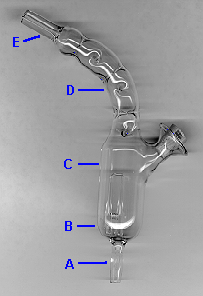
My experiments covering this long period [of time] have convinced me of its efficacy in curing in curing consumption [tuberculosis], asthma and other diseases of the respiratory organs, as well as diseases of the blood. I find that this medicament, when properly administered, increases the red blood corpuscles and hemoglobin and has a general beneficial action upon the system....
Briefly stated, my invention may be said to consist in bringing an active oxidizing agent [ozone] into proximity to or in contact with…[an] oil of the terpene group, the resultant product being administered to the patient in an inhalable form.
Variations of Neel’s original device are used today by physicians, clinics, and laypeople worldwide.
Generally, there are three types of units that safely produce ozone. The first is a low powered generator containing a specially designed short wave ultraviolet lamp. This unit creates ozone from ordinary air by duplicating the action of a narrow band of UV radiation from the sun (which produces ozone by reacting with oxygen). With this type of device, the production of ozone is limited by the UV wavelength that must be used to produce ozone (as in nature). Such devices are excellent for air purification or light water purification—although since there is no way to increase the strength of a UV bulb, the ozone concentrations remain far below that necessary for most laboratory or clinical purposes.
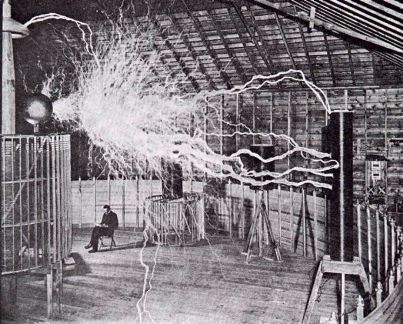
The other ozone technologies are usually called cold plasma and cold corona discharge—although the word “cold” is a bit misleading, since due to the use of electricity some heat does exist. Both technologies can be used for medical applications if they are supplied with oxygen from an oxygen tank or oxygen concentrator. Sending pure oxygen rather than mixed-gas air through these ozone generators guarantees that only oxygen and/or ozone are produced, instead of ozone and toxic nitrogen compounds, or ozone and other harmless (but unwanted) gases. The cold plasma design (invented by Nikola Tesla) consists of glass rods filled with noble gases excited by high voltage. The resultant charged energy field stimulates the oxygen in the surrounding air at such a high level that the oxygen splits apart and recombines to form ozone. The cold corona discharge technology consists of a double walled glass tube, around which an electrical field is generated. The oxygen that is passed between the two layers of glass becomes so energized by the field that the oxygen splits apart and recombines to form ozone.
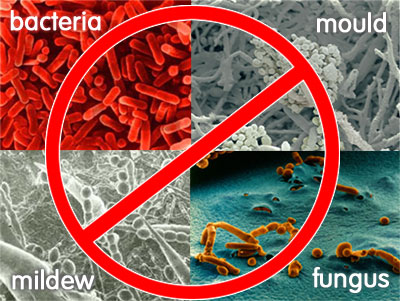
How does ozone operate as a scavenger and de-contaminant? A good description can be found in Medical Applications of Ozone, where one scientist defines ozone as an “oxygen atom in the body on a rapid transit.” And a “rapid transit” it is indeed, whether in the body, in water, or in air. Ozone’s high oxidative energy allows it to neutralize toxins that the body can then eliminate, often through sweat. Ozone’s powerful disinfectant properties account for its huge success in the treatment of all kinds of conditions, including serious infections. The electrical charge that ozone carries is so strong that it can literally blast a hole through the outer cell wall of a microbe and kill even aerobic pathogens. However, as with all substances, ozone must be dispensed in the correct amounts to be safe. To kill aerobic pathogens, the concentration of the gas must be high enough without exceeding the capacity of human cells to contain it. Therefore, manufacturers of ozone equipment either have the output set for a single safe level, or include controls that regulate the ozone flow.

There are many types of ozone-producing units, which can range in price from $300 to $6000. Many readers are familiar with air purifiers that emit ozone to help clean up contaminants in their homes. Other ozone generators emit ozone that flows through tubing into a body suit, which covers the person (except for the head and hands) to allow the ozone to be absorbed transdermally, or through the skin. Other units have attachments that can pass ozone through oil to make it safe to inhale. Olive oil is commonly preferred, although some clinics use essential oils of eucalyptus, peppermint, spearmint, and tea tree. Inhaling modified ozone in this way has proven to be an effective treatment for asthma, bronchial infections, and even emphysema. Except for the special care required with inhalation, ozone can be inserted into all of the other bodily orifices. It can also be injected into the blood vessels and muscles in patients who are very ill with cancer, AIDS, and other degenerative illnesses. In Germany and other European countries, doctors remove the person’s blood, infuse it with ozone, and inject it back into the body. This process is called Major Autohemotherapy or MAHT. In Appendix B, I list some doctors who perform ultraviolet blood irradiation or photoluminescence, a procedure in which the blood is irradiated with a narrow band of UV light and then returned to the body. The reason this procedure helps eliminate serious infections such as AIDS-related conditions and cancer is that the UV light creates ozone.
Ozone can also be dispersed into drinking water. If kept in the refrigerator at 40° Fahrenheit (7.2° Celsius) after being bubbled into water for 45 minutes, the ozone will remain intact in the water for three to four days. Frozen in a plastic container, the water can be stored for several months. Another unique way of storing ozone consists of bubbling it continuously through extra virgin olive oil for about three weeks (following Nikola Tesla’s original recipe), which first bleaches the oil and then gels it into a paste-like consistency. When kept refrigerated, German researchers have found, the salve retains its effectiveness for over 10 years. “When used during massage,” Pressman reports, “the ozonide [the altered ozone in the olive oil salve] enters the tissue and oxidizes lactic acid and toxins, and this has proven to be an effective treatment for many skin problems” including burns, dry skin, fungal infections, insect bites, sunburn, sweat gland infections, and wounds.
One health-related but industrial use of ozone is the decontamination of swimming pools and hot tubs, a much more popular practice in Europe than in the United States. In fact, it is so common in Europe that when the Olympics were held recently in America, visiting overseas swimming teams, knowing how poisonous chlorine is, insisted on having ozone instead of chlorine to disinfect the swimming pools. (This was done; although once the Olympics ended, the ozone equipment was removed and chlorine was reinstated.) For most industrial uses, the ozone can be created with plain air, whereas for medical uses, the source of the ozone is always with oxygen as the feed gas.
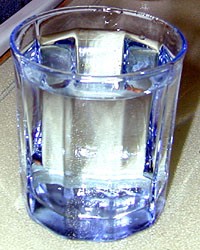
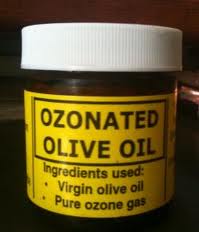
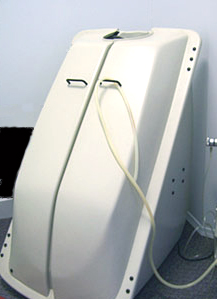
This brings me to the growing popularity of including ozone as a feature in steam cabinets. (A sauna room should never be used, since as I mentioned earlier, ozone should not be inhaled except through olive or other oils.) According to the health care providers I consulted who use ozone in their practice, the wetness of the steam allows the ozone to seep through the skin, as ozone does not enter the body at all if the skin is dry. Furthermore, the heat from the steam can help the person perspire. Once the skin is wet, the ozone is readily absorbed into all the bodily tissues, including the lymph and fat, which hold the majority of the body’s toxins. (Transdermally applied ozone is especially helpful for cleansing the lymphatic tissue—which, as I explained in Chapter 2, needs plenty of support since it does not have an independent pump to make the lymph flow.) After the bloodstream reaches its natural saturation point, the body simply does not accept any more.
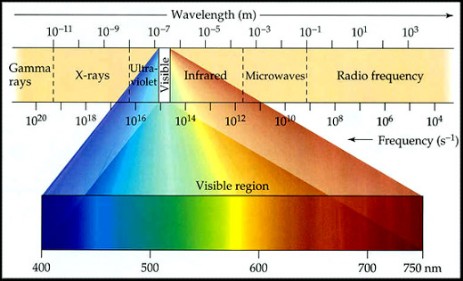
Although ozone has traditionally been used with steam sauna cabinets, I see no reason why ozone cannot also be combined with a FIR sauna cabinet, as long as you are able to perspire. If you have trouble perspiring, shower and leave some moisture on your skin before entering the cabinet. This acts as a “starter” for the body to perspire, but more importantly prepares the skin to better accept the ozone. Or, you can exercise to begin the sweating process. (A rebounder—mini-trampoline close to the ground—is very effective for gentle, effective exercise.) As of this writing, I am aware of only one FIR sauna cabinet that is made with suitable, ozone-resistant materials and can therefore accommodate an ozone generator. However, I sense that this will soon change, since both FIR sauna cabinet manufacturers and a better informed public are becoming aware of the benefits of ozone. Remember, you can use outboard ozone equipment only if the cabinet is constructed of an ozone resistant material such as fiberglass. Place the ozone generator near the cabinet and run the tube from the generator to the inside of the sauna through the hole at the top. To avoid breathing the ozone, wrap a towel around the opening of the unit where the neck sticks out.
Be aware that ozone can cause intense cleansing reactions (also known as a healing crisis), which can feel quite uncomfortable and even scary, especially for people who are not used to detoxification programs and don’t understand how to interpret the symptoms they feel when the body is expelling toxic waste. Cleansing reactions typically resemble the flu, although any symptoms can manifest from waste materials that the body is trying to expel. The body often tries to eliminate waste materials through the skin, which can cause very itchy skin rashes. The rashes can be helped by taking protease enzymes and applying soothing creams. It is true, as Pressman writes, that “The more frequent the treatments, the more rapid the healing, and the more severe the healing reactions will be. It may become so uncomfortable that the person will need to reduce the frequency of treatments from once daily to once weekly.” Some people follow Pressman’s schedule of ozone sauna treatments once a day for a half hour. However, other health care practitioners as well as laypeople prefer a more moderate approach, such as 20 minutes three times a week. Rather than push the body so hard in the first place, you might simply reduce the treatments before reaching that level of discomfort. If toxins are emerging through the skin, they are circulating in the bloodstream; and if toxins are that plentiful in the bloodstream, they might be putting an extra strain on the liver and kidneys. Since many people who are ill already have a weak liver and/or kidneys, it seems wise to proceed slowly. This is good advice for any detoxification program.
Cancer tumor cells are tightly packed as they try to force their way in between other cells, and they are thus less able to shed heat. This accounts for the effect that heat stress has in killing cancer. Both heat stress and ozone kill cancer, so this treatment offers the best opportunity to eliminate cells which are fermenting sugar anaerobically, [and to] halt metastasis and restore healthy aerobic function. Ozone is able to seek out and destroy all the cancer cells with more certainty than the surgeon’s crude scalpel. In addition, ozone will oxidize the toxins which caused the original problem, and thus prevent recurrence of the problem. This is in contrast to chemotherapy which is massively immune-suppressive, and radiation which causes cancer.
In his newsletter Let’s Talk Health, Dr. Kurt Donsbach summarizes how oxygen therapies work:
Increase tissue oxygenation, which brings about improvement in metabolic rate
Stimulate production of white blood cells, which are necessary to fight infection
Decrease blood carbon monoxide load, which frees hemoglobin to carry oxygen
Increase hemoglobin disassociation [the ability of hemoglobin in the red blood cells to let go of the oxygen they are carrying], thus increasing delivery of oxygen from blood to cells
Increase red blood cell flexibility, thus allowing them to squeeze through the smallest blood vessels more easily
[Break down] and degrade petrochemicals
[Inhibit] the growth of new tissues such as tumors
Increase the production of interferon and tumor necrosis factor, used to fight infection and cancer
Increase the efficiency of the antioxidant enzyme system, which scavenges excess free radicals
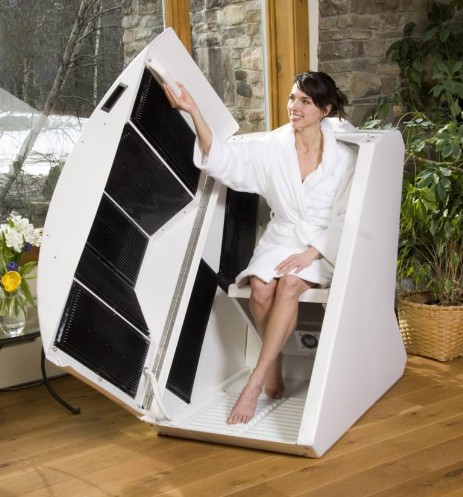


Although many of ozone’s functions replicate the effects of heat alone, it is clear that the combination of ozone with conventional body heating methods has additional benefits. Many people who select ozone as an additional feature to their sauna cabinet have serious illnesses—and for them, ozone is a necessity rather than a luxury, and is well worth the additional cost. However, if you cannot afford ozone, don’t worry about it. Simulating most of the effects of a fever through heat only is very powerful, particularly if it’s done repeatedly. Although ozone and heat are synergistically quite potent, sometimes heat by itself will accomplish what ozone alone cannot.
There are many ways to take a sauna.
